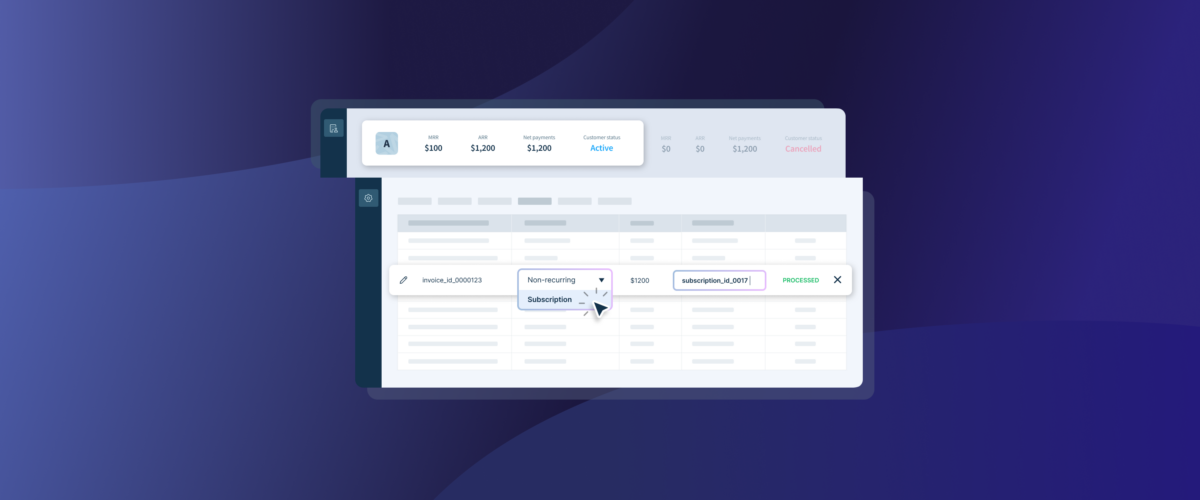In ChartMogul, data imported from your subscription billing system(s) serves as the foundation for calculating your SaaS metrics. But sometimes, there are issues with that data which can affect the accuracy of your reports.
To help, we’ve enhanced our suite of data cleaning tools, giving you greater control over the data you import into ChartMogul.
Check out the other data cleaning features in ChartMogul:
How data cleaning works in ChartMogul
Now, you can easily make edits directly in ChartMogul. All imported billing and subscription data —– like invoices, line items, transactions and subscription events —– can be edited. This applies to data from Stripe, Chargebee, Recurly and all SaaSync-supported billing integrations like Paddle, Maxio and Xero.
Users with Owner, Admin or Staff roles can make changes, and each edit is logged with the date, time and author details. Edits are reversible, too.
Any changes you make are stored separately from the original billing data, so even if the source is resynced or billing data is reimported, your edits will still be applied.
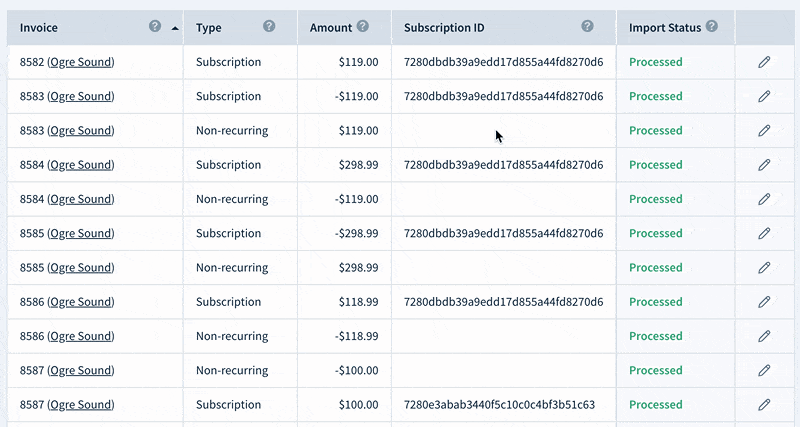
Data cleaning is useful when a charge in your billing system is mistakenly categorized as non-recurring. This typically occurs when you’re offering custom pricing for a specific customer or when manually adjusting a customer’s subscription.
When these one-time charge invoices are imported into ChartMogul, they won’t contribute to your recurring revenue as ChartMogul interprets it as non-recurring from your billing platform.
The good news is that you can now easily correct this in ChartMogul. Simply change the line item type to “recurring” and add the necessary subscription information and ChartMogul will treat that revenue as recurring.
There are four other ways you can correct data in ChartMogul. Together, this suite of data cleaning tools puts you in control, ensuring your team keeps accurate SaaS metrics in ChartMogul.
Merging customers
Duplicate records cause a lot of confusion, but can be common when importing data from multiple sources.
In ChartMogul, you’ll be importing customer and subscription data from a range of sources. For example, from Stripe where you manage billing, and from Hubspot where you handle leads and customer communication. When you have many data sources, you may end up in scenarios where a single customer or lead is imported multiple times, resulting in duplicate records in ChartMogul.
One way to prevent this is via the merge customer automation. Once created, it will instantly start organizing your customer records in ChartMogul, combining data from duplicates into one complete profile with all data points in one place. Note, you can also merge customers via API, or manually on the customer profile itself.
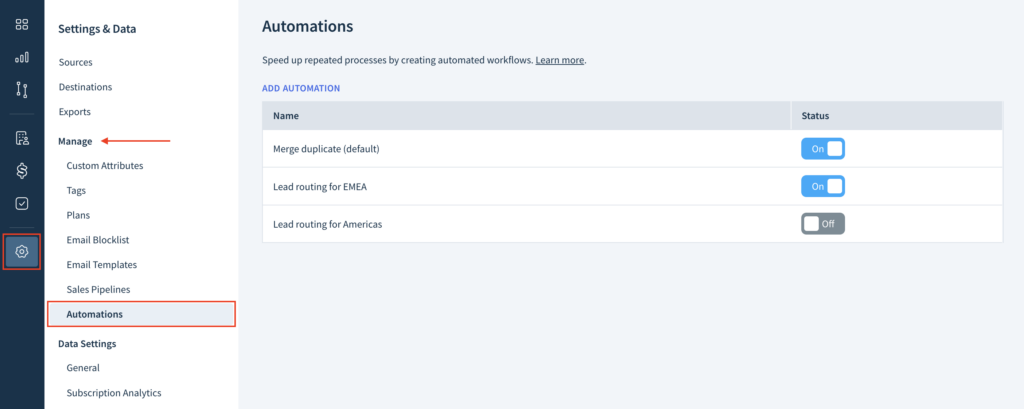
MRR editing
MRR is a key metric in ChartMogul’s Subscription Analytics. If it’s incorrect, it should be fixed right away to keep your SaaS metrics accurate. Inaccurate MRR can happen if data in your billing system isn’t in a state to allow ChartMogul to accurately generate an MRR history.
Good news —– ChartMogul allows you to edit MRR data to ensure it’s correct historically. MRR edits are highlighted, with a note of the change made, the date and which user made the edit.
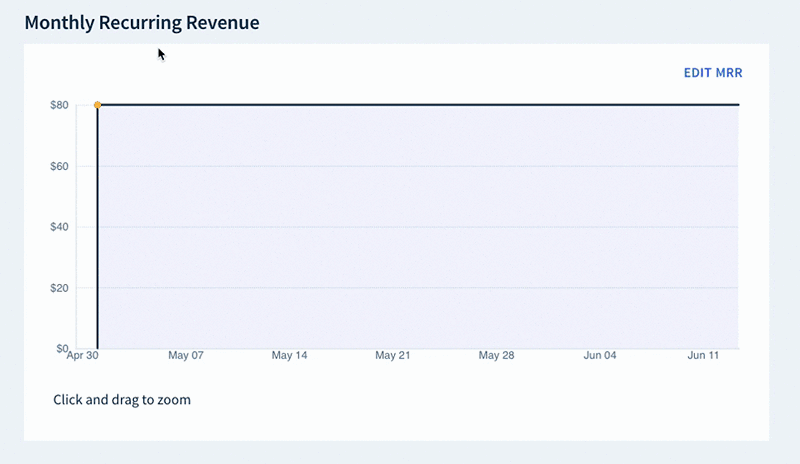
Connecting subscriptions
Gaps in a customer’s subscription history can occur if you manually cancel and re-subscribe a customer (e.g., in order to alter some terms of their subscription), or when you migrate a customer (or all your customers) from one billing system to another. In both scenarios, you’ll see either a gap or overlap in their ChartMogul subscription history.
In these situations, you can connect the customer’s two subscriptions to report this as a single subscription without interruption.
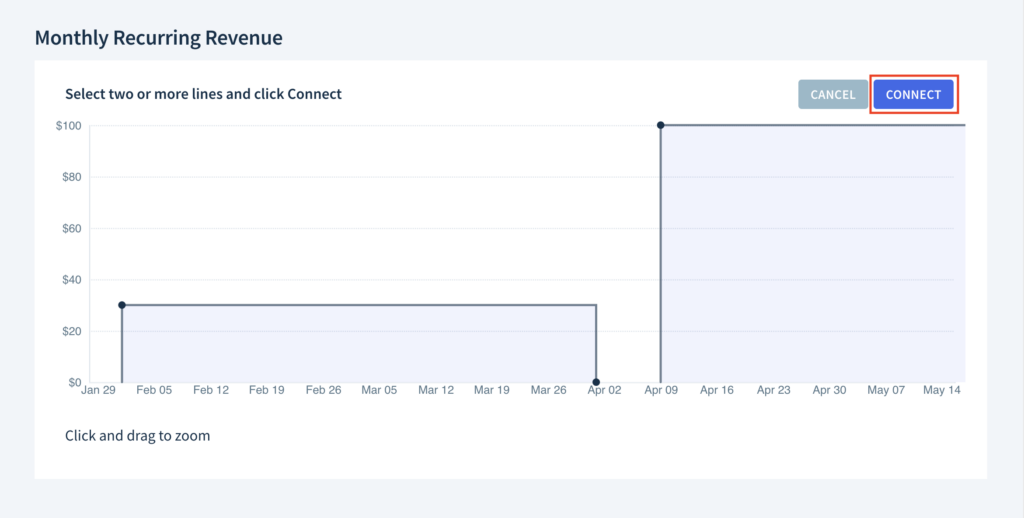
Adding subscriptions manually
Sometimes, you’ll need to create a subscription manually in ChartMogul, when for example:
- Some customers are invoiced outside a connected billing system.
- You’re importing old subscription data where you don’t have associated invoices available to import.
Manual subscriptions are treated like any other subscription in ChartMogul, and feed into your SaaS metrics.
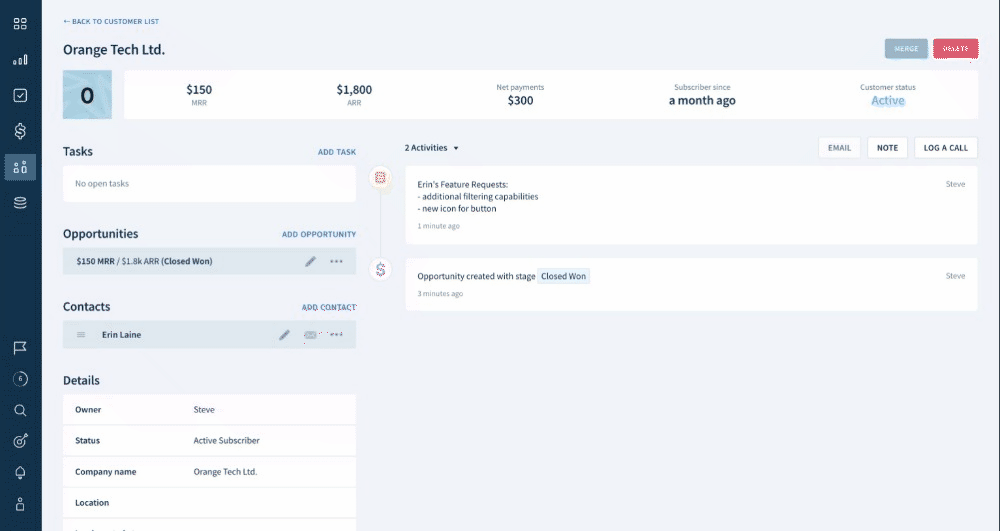
If you’d like to learn more about ChartMogul’s suite of data cleaning tools, reach out to us.
